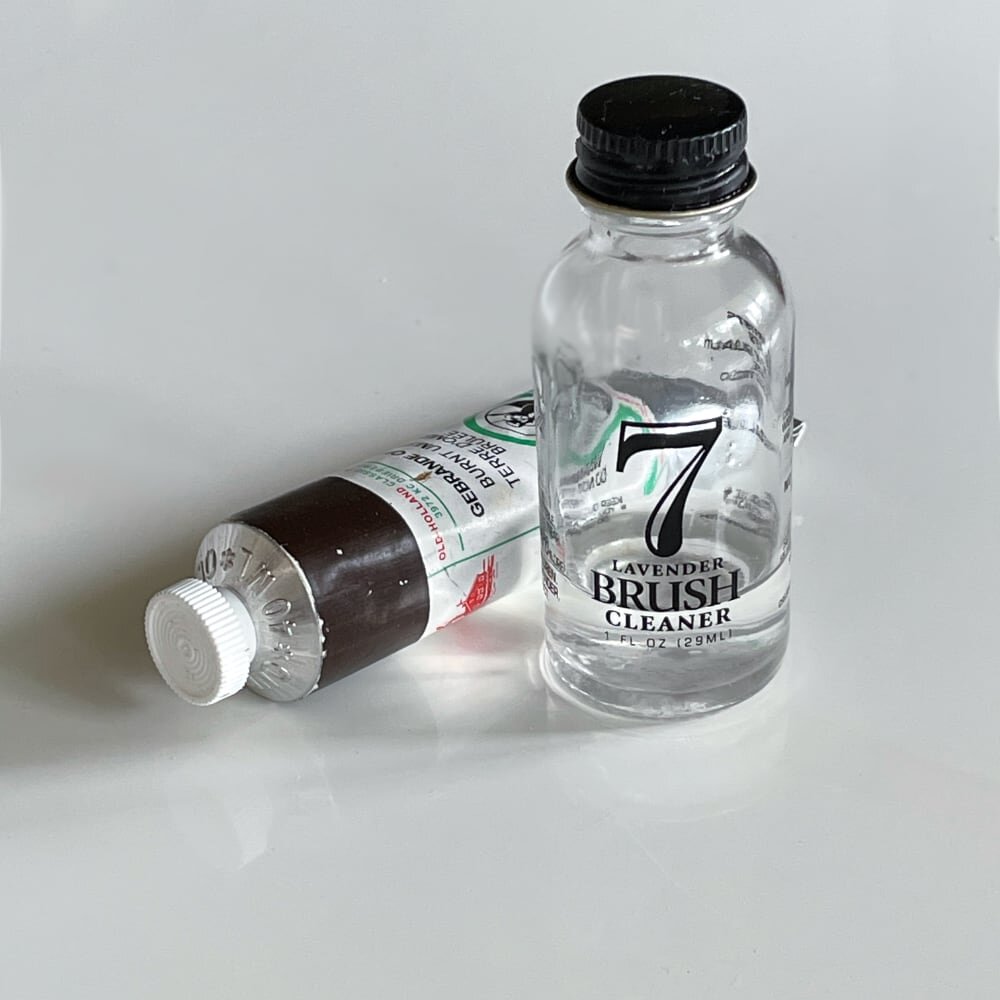1. Single-Pigment Paint, Part One: The Best Brands
I like to keep things simple, and tube colors are no exception. Reducing your palette to its essentials brightens and tightens your paintings.
In this series I’m going to explain:
Part 1. Who are the best manufacturers of artist-grade extra-fine oil colors
Part 2. What single-pigment colors are essential for your paint palette
Part 3. Where to buy single-pigment paint
Part 4. How to tell what pigments your paints use
Part 5. Why you should limit your palette to single-pigment paints
Part 1
Who makes the best oil paint for artists? Old Holland and M. Graham are the only oil paints I use, each for different reasons.
(Update: Charvin paints have been demoted after significant quality issues in an alarmingly short time frame.)
Old Holland paint holds its shape
Oil paint works well with spike lavender.
M. Graham uses pure walnut oil
Old Holland colors, made in the Netherlands exclusively with traditionally wind-milled and refined cold-pressed linseed oil, are, in my experience, the beefiest, most saturated, and truest colors for your money.
They claim lightfastness over 100 years, as does M. Graham, using both the industry-standard Blue Wool test and ASTM parameters. If Old Holland’s science is correct, then, in fact, under regular exhibition conditions, their best colors should last a minimum of 450 years and possibly up to two millennia. (Of course, a lot can happen between now and then, including the molecules of your pigments getting tired and laying down for a long nap, thereby becoming transparent to the naked eye and allowing for the art historian’s boon, pentimenti. But that’s for a future article.)
In my nearly twenty years of working with their paints personally and with students, I’ve seen their impeccable quality maintained over decades from dozens of dozens of new tubes purchased with identical, reliable perfection.
Charvin are French and use poppy oil in their colors, which yellows minimally compared to linseed oil over time.
I found my recent (Spring 2020) addition of a brand-new, hand-picked, single-pigment set of their tube paints to my studio to be, sadly, very high in oil. They have admirable tinting strength, but they feel like Charvin put the minimum pigment load necessary in each. And yet… somehow they color indistinguishably from Old Holland in many cases, which it would seem as a result of their quality of pigments. Similar Old Holland paints are sometimes so rich in pigment they squeeze like fresh marzipan rather than Charvin’s (too-warm) “butter.” This higher oil-to-pigment ratio makes Charvin paint too soft in my opinion. (A way to resolve this problem is to lay out your palette on sturdy paper kitchen or shop towels and let them absorb the oil to your desired consistency, from a few hours up to overnight. Knife your paints onto glass when you’ve achieved your preferred texture and have at it.)
One advantage Charvin has over the others is they make 20ml Plein Air size tubes, ideal for painting when traveling near or far, and especially kind to your budget.
Update (Summer 2021):
In fact, about a third of Charvin paints froze in their tubes in about a year. They were stored in a cool, dry place, with properly sealed caps, out of direct sunlight. Compared to some of my Old Holland and Graham paints which have been in great shape for 10, 15, and up to 20 years, my Charvin test paints died a rapid, and unmourned, death.
Additionally, I found their texture too weak across the board to continue to recommend them after a year's use and research despite their affordable prize and small size availability.
M. Graham’s paint is made in Oregon, USA and uses walnut oil explicitly for its clear, slow drying - long-cited since the earliest days of the Renaissance as the reason to prefer this vehicle.
I’ve used Graham paints for about half the time I’ve been using Old Holland’s, so just for over a decade now, and I find their colors to be very strong and high in tinting strength but an altogether different texture compared to Old Holland and Charvin, landing somewhere in the middle of them. Often though, especially in warm tropical weather, some of their colors feel a little runny. Walnut, poppy, and linseed oil-based paints can be used together and often interchangeably, even though there’s some technical research out there about which vehicle you should use for a particular pigment as well as which layer in a painting. (Each of these oils is effectively the same thing for day-to-day painting; however, at the conservation level, drying times, proportions of fats and acids, and even the processing by which each of these oils is refined all factor into long-term paint film composition and care.)
I am very interested in acquiring a tube of Graham’s Titanium White Sunflower. It’s apparently the brightest white you can buy and uses sunflower oil, another option that is supposed to yellow minimally compared to linseed. Perhaps that lightfastness test I’ve been contemplating should be moved off the back burner…
Update: Graham’s Titanium White Sunflower is in apparently such a slow-drying, some would say non-drying, oil vehicle that I doubt the advantages would outweigh the risks when in a more tropical, moist environment. Anecdotal reports indicate sunflower oil has not dried after years in some artists’ studios.
So, feel free to try Old Holland and M. Graham and use them together since the only real practical difference between them is raw paint texture as a result of their vehicle choices. Otherwise, their single-pigment colors are interchangeable for your palette based on your personal preference.
And as a final note, you may be wondering why not Maimeri or Sennelier or Williamsburg or any other number of artisan mixers? Don’t waste your time; I’ve compared their marketing materials (romantic) to their MSDS sheets (“Just the facts, ma’am”) and they all have problems buried in their recipes: fillers, binders, hidden pigments and ingredients, you name it.
If you want museum-quality (and museum-preferred) colors mixed purposefully with time-tested oil vehicles, then Old Holland and M. Graham are the only ones on the market who have been and will continue to reliably make pure paint.
Questions? Comments? Shoot me a message below.
Next up: Part 2. The 21 Essential Colors >>

